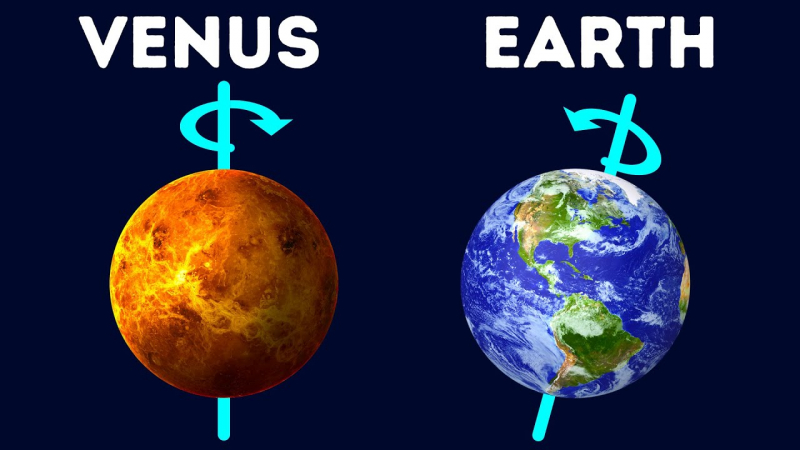Venus Spins Clockwise On Its Axis

As seen from above the North Pole of Earth, every planet in the Solar System revolves around the Sun in an anticlockwise orientation. One of the interesting facts about Venus is it has the slowest rotation of any planet, rotating clockwise in retrograde once every 243 Earth days. The majority of planets likewise rotate on their axes in an anticlockwise way. Venus is very near to being spherical due to its slow rotation. Thus, a sidereal day on Venus lasts longer than a year on Venus (243 versus 224.7 Earth days). Earth's equator revolves at 1,674.4 km/h, whereas Venus's rotates at 6.52 km/h.
According to current understanding, Venus initially rotated in the same direction as the majority of other planets and, in a sense, still does today; at some time, it simply reversed its axis 180 degrees. In other words, it spins in the same direction as always, just upside down, making the spin appear to be backward when viewed from other planets. Strong air tides may have resulted from the sun's gravitational influence on the planet's extremely dense atmosphere, according to some scientists. These tides, along with friction between Venus's mantle and core, may have been the initial cause of the flip.
Jacques Laskar and Alexandre Correira now argue that Venus might not have actually flipped at all. Instead, they suggest that its spinning slowed to a halt before turning around. The scientists came to the conclusion that Venus's axis might have moved to a range of points throughout the planet's evolution by taking into consideration the aforementioned variables as well as tidal influences from other planets. It will eventually settle into one of four stable rotation states, two in each direction, whether it flips or not. Venus would be more stable in one of the two retrograde rotating modes, the researchers add.






